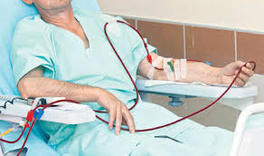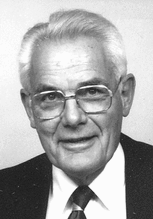 There is strong evidence that putting people with atrial fibrillation (AF) on warfarin reduces the risk of stroke by about two thirds. This is a big effect, consistently observed and has resulted in a large increase in prescription of warfarin and more recently non-warfarin based anticoagulants (NOACs). When deciding about anticoagulants use you constantly balance the expected reduction in stroke risk with the potential increased risk of bleeding. There are some patients, such as those on renal dialysis, who simply weren't included in the AF anticoagulant trials so it is reasonable to ask whether warfarin is equally effective and safe in these patients? People on dialysis are regarded as a high risk group, often older, diabetic and have more vascular disease. They are at high risk of cardiovascular events. Atrial fibrillation is common and hence if you use the traditional scoring models (CHADS2 and CHADS2VASC) they are at high risk of stroke. Warfarin appears to be a reasonably safe drug for renal failure patients because it is not excreted by the kidney. So it would seem reasonable to treat a dialysis patient who goes into AF with warfarin and that is currently normal practice. Last March a paper was published in Circulation which raised questions about the safely of this approach. This Canadian study used case-control methodology in people age 65 years or more admitted to hospital with AF. The patients were grouped into those on dialysis (haemodialysis or peritoneal dialysis) and non-dialysis patients and into those treated with warfarin or no-warfarin They researchers then determined the association between warfarin, stroke risk and bleeding in dialysis and non-dialysis patients. There were 1626 dialysis patients and 204,210 nondialysis patients in the study. Of the dialysis patients 46% were prescribed warfarin and these people not surprisingly had more heart failure and diabetes. In patients on dialysis warfarin didn't reduced the risk of stroke but did increase the risk of bleeding by 44%. So these results are worrying and suggest the worst of both worlds: No benefit but with increased risk. What of the non-dialysis patients in this study? Warfarin significantly reduced the stroke rate by 13% from 2.51 to 2.19% per year. Earlier in this article I wrote that warfarin reduces the risk of stroke in AF by 66%, which is much greater than that observed in the case controlled study. So there is something strange going on in this study because the expected benefit of warfarin in the non-dialysis patients wasn't seen either. whilst raising an interesting observation, at the moment this study is not strong enough evidence to stop using warfarin in renal dialysis patients. There are a number of previous studies calling into question the efficacy of warfarin in dialysis patients and now with data potentially suggesting harm rather than just no benefit It must be time to conduct a randomised controlled trial of anticoagulation in patients with AF on dialysis. Since the data does not currently show benefit in this group it would be reasonable to design the trial to test anticoagulation versus a placebo. Funding for a trial of warfarin would be difficult but recently the FDA have approved Apixaban for used in patients with end stage renal failure on dialysis so this would be a great opportunity for a trial of this NOAC versus placebo to answer this question.
0 Comments
 Before the Bruce protocol was used for exercise treadmill testing there was no standardised validated stress test for cardiac patients. Robert Bruce recognised that patient's were not reliably or reproducibly stressed by the techniques available and so developed a single and then a multistage exercise treadmill test in which individuals could attain a self-determined point of maximal exertion whilst having their blood pressure, heart rate and ECG monitored continuously. He testing the protocol in normal subjects and cardiac patients and showed the the feasibility, safety and clinical utility of the protocol which evolved into the modern seven-stage ‘Bruce protocol’ we know today. Each exercise stage lasts for 3 minutes, after which the treadmill speed and inclination increased. Bruce chose 3 min stages as this provided ‘the optimal compromise between requirements for physiological adaptations and minimal time for expeditious testing’. The protocol starts with a gentle, submaximal stress and gradually progresses to higher and higher workload. The Bruce protocol exercise test is still used as the first-line investigation in patients with suspected coronary artery disease around the world although it has competition from newer non-invasive imaging technologies such as nuclear perfusion scanning and exercise echocardiography which have been shown to have better diagnostic accuracy. Robert Bruce was born in 1916 and 7 years after graduation became the first chief of cardiology at the University of Washington School of Medicine in Seattle where he spent the rest of his career. His landmark 1963 paper first described the multistage protocol and despite his death 10 years ago his name lives on in the minds of generations of doctors as the ‘Bruce protocol’ treadmill test is used daily around the world. |
Dr Richard BogleThe opinions expressed in this blog are strictly those of the author and should not be construed as the opinion or policy of my employers nor recommendations for your care or anyone else's. Always seek professional guidance instead. Archives
August 2023
Categories
All
|
 RSS Feed
RSS Feed

